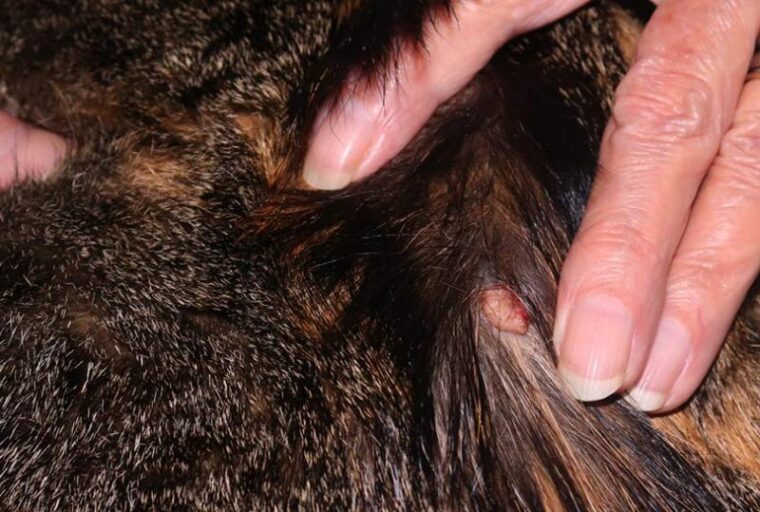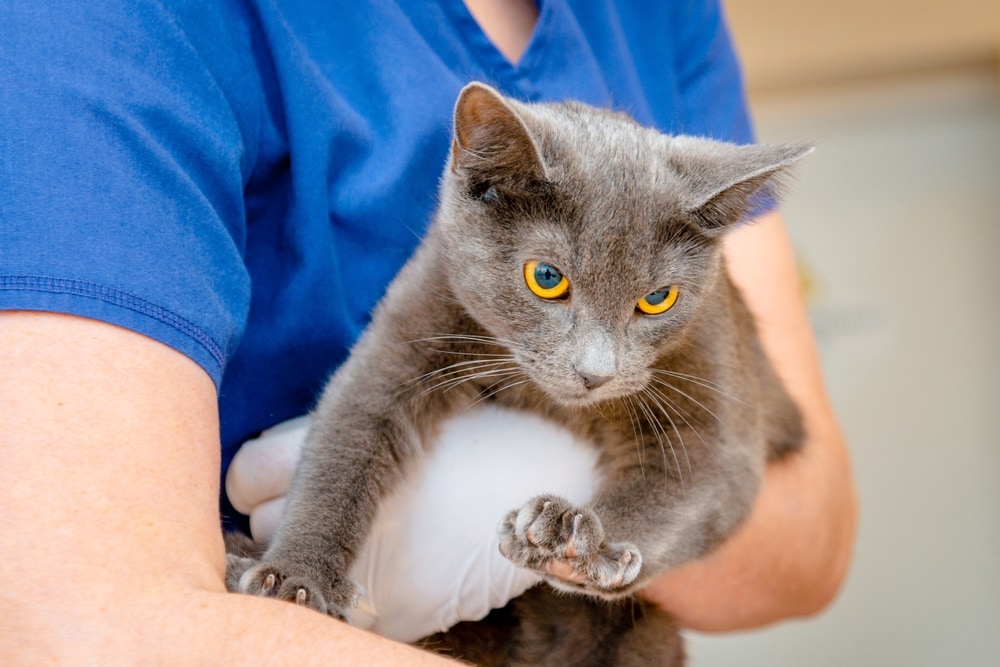
Click Below to Skip Ahead
Histiocytomas are a rare type of skin tumor in cats. There are two different types of histiocytoma: one is relatively benign, and the other is much more difficult to cure. While often considered a disease of dogs, as it is far more common in our canine friends, cats can also be affected by histiocytomas. Additionally, while most histiocytomas in dogs regress or “disappear” without any treatment, this is often not the case in cats.
This article will delve into feline histiocytomas; what we know, what we don’t know, and what we should be looking out for as cat owners.
What Are Histiocytomas in Cats?
Understanding histiocytomas requires us to understand what the histiocyte is. Histiocytes are special cells of the immune system, often found beneath the skin, but also in the nose, intestines, and lungs. These cells are responsible for “mopping up” cellular debris and pathogens—in other words, things that shouldn’t be there.
A histiocytoma is a skin tumor made up of abnormal histiocytes. These histiocytes have proliferated and formed a mass, often found on or just beneath the skin.
The 2 Main Forms of Histiocytoma in Cats
1. Feline Histiocytic Sarcoma
These are usually a solitary lump of the skin, similar to those commonly seen in dogs. Many of these histiocytomas will go away of their own accord, often within 3 months of appearing. Though relatively benign, they can invade local tissues and spread to nearby lymph nodes, so surgical removal of these lumps may be recommended.

2. Progressive Dendritic Cell Histiocytosis
This is a more aggressive form of histiocytoma in cats. Though it may start as a single lump on the head, neck, or lower legs, multiple lumps start to appear quite quickly, hence the label “Progressive”. Spreading to lymph nodes is common. Unlike Feline Histiocytic Sarcomas, this form of histiocytoma does not regress of its own accord, and treatment options are limited. Middle-aged to older cats are more commonly affected by Progressive Dendritic Cell Histiocytosis.
What Are the Signs of Histiocytomas in Cats?
Initially, when the tumor is confined to the skin, cats will remain well in themselves. Later on, if the tumors become large and painful, or if they spread to lymph nodes, cats tend to show signs of malaise.

What Causes Histiocytomas in Cats?
At present, the cause of both Histiocytic Sarcoma and Progressive Dendritic Histiocytosis is unknown.
How Do I Care for a Cat with a Histiocytoma?
A lump is just a lump until it has been examined under a microscope. Cats can get all sorts of lumps on or under their skin; these lumps vary from infections such as abscesses and granulomas to cancers such as squamous cell carcinoma and lymphoma. A histiocytoma cannot be diagnosed by visual examination alone. For this reason, if you notice a lump on your cat, the first step requires a consultation with a veterinarian; the vet will discuss the available treatment options to care for your cat or remove the lump.
Treatment for histiocytomas depends on the type of histiocytoma present. The more “benign” Histiocytic Sarcoma can be treated by surgical excision. Sometimes, a “wait and see” approach is also reasonable; this means that the lump can be closely monitored in the hope that it will spontaneously regress.
Progressive Dendritic Histiocytosis is much more challenging to treat. Surgery, laser therapy, or immunosuppressive medications (or a combination of these) are options that can be considered with your veterinarian.
Frequently Asked Questions
1. How is a Histiocytoma Diagnosed?
Vets will start by giving your cat a thorough examination, documenting the size and nature of the lump/s. A useful “in-house” test is a fine-needle aspirate. This involves sucking up a small sample of cells from the lump using a needle and syringe and inspecting them under a microscope. This may give clues to the lump being a histiocytoma, but it rarely provides a definitive diagnosis.
A true diagnosis is reached by performing a tissue biopsy. This is usually performed under sedation or general anesthesia, as cats must remain still. A sample of the lump, or the entire lump, is surgically removed and sent to a laboratory. Here, a specialist veterinary pathologist will examine the tissue under a microscope.
2. What is the Prognosis for a Cat with Histiocytoma?
Cats with Histiocytic Sarcoma have a good prognosis. Some regress without any treatment; if this is not the case, surgical removal of the lump is often curative. Unfortunately, cats with Progressive Dendritic Histiocytosis have a much poorer prognosis. Surgery can be performed, but it may not prevent new lumps from appearing elsewhere on the body. Medical treatments are often effective for a short period of time but do not cure the disease.
Conclusion
Though rare in our feline friends, histiocytomas in cats can have serious consequences. This tumor of a specific tissue immune cell is more common in middle-aged to older cats. Most histiocytomas begin as a small skin tumor from here, they can either die off spontaneously or progress to form multiple nasty lumps.
If you’ve noticed a lump on your cat, don’t hesitate to arrange an appointment with your veterinarian. Earlier detection and treatment of lumps—before they’ve grown too big or spread to other organs in the body—always offers the best outcome.
Related read:
- Brain Tumors in Cats: Causes, Signs & Treatments (Vet Answer)
- Cat Skin Cancer: Vet Explained Signs, Stages & Treatment
Featured Image Credit: Eleanor McDonie, Shutterstock







